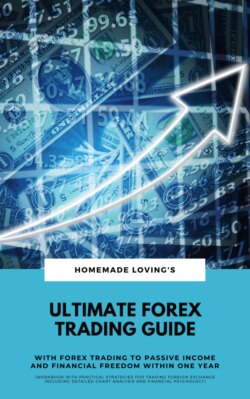Читать книгу Ultimate Forex Trading Guide: With Forex Trading To Passive Income And Financial Freedom Within One Year (Workbook With Practical Strategies For Trading Foreign Exchange Including Detailed Chart Analysis And Financial Psychology) - HOMEMADE LOVING'S - Страница 28
На сайте Литреса книга снята с продажи.
What does margin mean in Forex trading?
ОглавлениеIf traders were always winning, no margin would be required. Of course, this is also where losses arise. The Forex broker wants to protect himself for these cases and demands the so-called margin from his customers or traders. The margin is usually about 1 percent of the stake.
If prices fall now and losses are incurred, the Forex broker has a hedge through the margin. Margin thus represents a deposit on the account, which is available for hedging against a possible price loss. The trade called by the trader is then maintained until the account on which margin is posted is zero or the trade is terminated by the trader. If the margin is zero, there is a margin call. This means that the trader has the obligation to deposit the same amount again to cover further losses. This is obligatory for every customer or trader, because he did not end the trade manually in time or set a so-called stop loss.
Leverage in Forex Trading
Leverage transactions in Forex trading are understood to be those transactions in which high profits can be achieved with a low equity investment. This is due to the fact that the broker, for example, offers a leverage of 200 : 1.
A leverage of 200 : 1 means that a total of 200 units (100 x 200 = 20,000) of a set unit (for example 100 US dollars) are circulated. In a figurative sense, 199 units are borrowed from the broker. The more units are traded, the higher the profits will be. This means that the greater the leverage, the higher the possible price gains. This also creates a special incentive for the traders. Even with small price fluctuations, high profits can be achieved. That is then very tempting.
On the other hand, however, large losses can quickly occur during lever operations. Therefore, it is useful for beginners and novices to work with small levers first to get a feeling for the behavior of the lever.
What is a stop loss?
A stop-loss is the limit below which a loss can no longer fall. When the exchange rate reaches the set limit, the trade is automatically terminated. This serves to avoid uncalculated losses. Such a function can also be used to set a maximum profit in advance. In this case, the Take Profit function closes the trade at a price set by the customer or trader.
The stop-loss function is one of the most effective ways for the trader or client to protect themselves from unexpected price losses. It is nothing other than a sell order when a certain position is reached, which is then triggered when a certain price is reached.
Frequently, behind a strong currency loss there are also clear fundamentally justified facts for this rapid and sudden decline, which can also partly be the beginning of a long downtrend. The customer or trader cannot easily recognize what kind of price decline it is and therefore he plays it safe with a stop-loss order.
